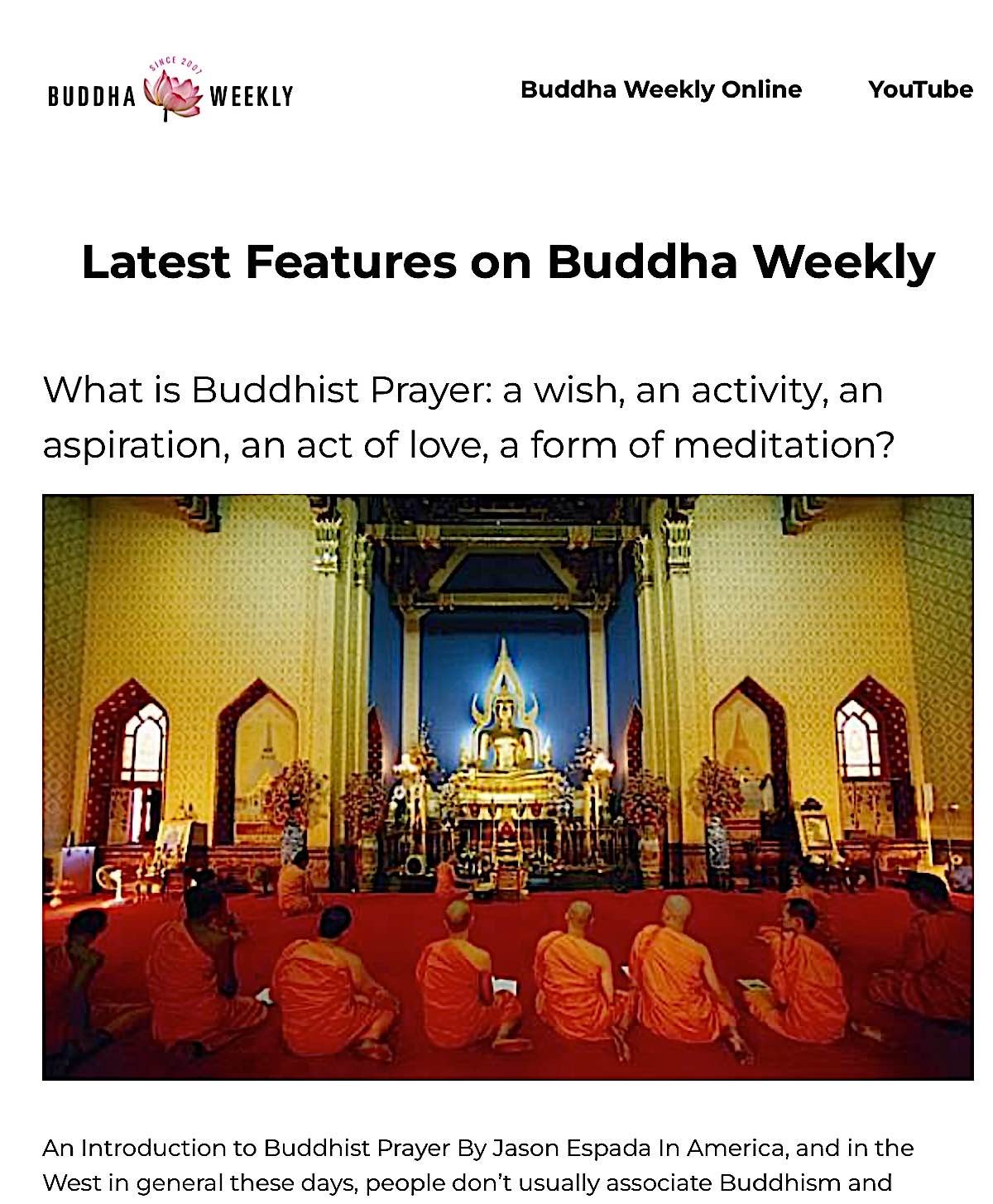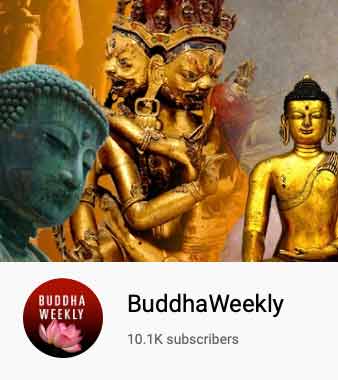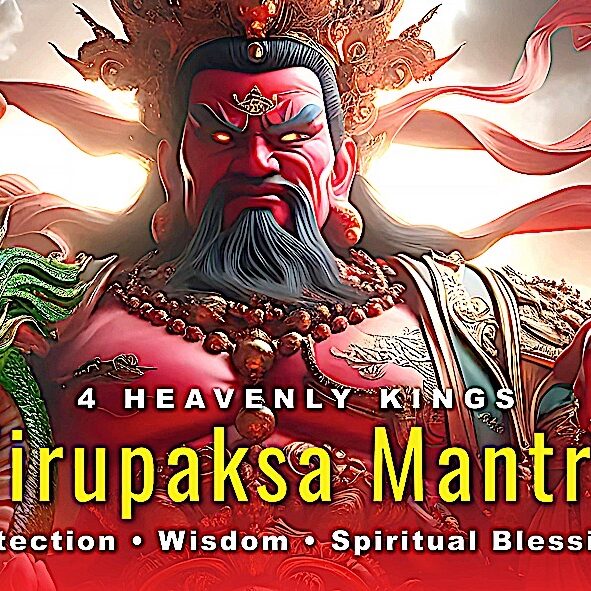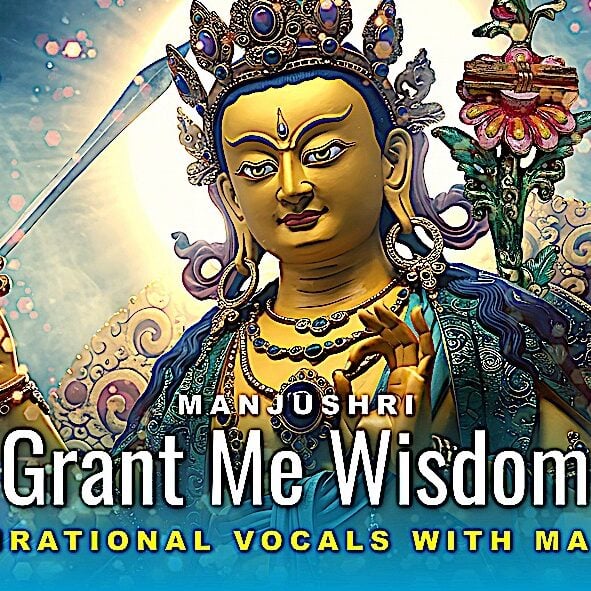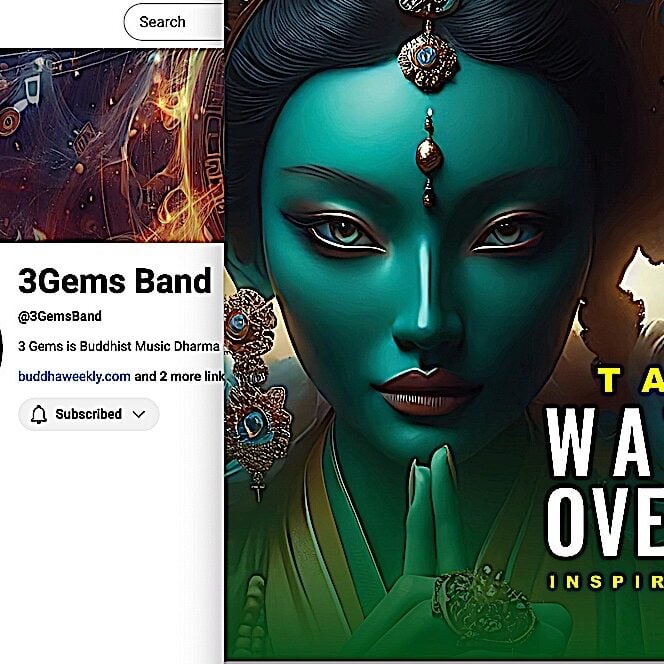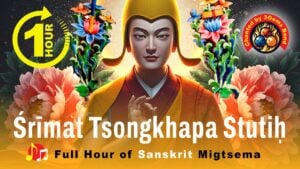Vajra Armor Mantra Sanskrit Music Video — Instant Protection (Chanted Sanskrit + Cham Dance Vibe) Your Musical Shield

⚡ A fiery musical journey blending ancient Sanskrit mantra with Tibetan cham dance energy—featuring swirling cham dancers, powerful Sanskrit syllables, driving beat, and the unstoppable power of Vajrapani’s vajra
Video:
Mantra:
Hum vajra phāt. Om padma sarva phāt Nañ pār Śīk naga nañ. Tadyatha. Sarva vārita hana hana vajreṇa rakṣā rakṣā svaha.
✨ Why Chant This?
- Shields against negativity (physical & spiritual)
- Ignites fearless energy (Vajrapani’s wrathful compassion)
- Used for centuries by Siddhis and Yogis
️ Press PLAY and feel:
- The rhythm of Sanskrit mantra.
- Enjoy the visceral power of cham dancers embodying divine wrath.
- The “powerful” moment you feel the protection around you.
Tip: Chant along (even silently) to sync your energy. Empowerment is not required as long as you visualize Vajrapani (this mantra is also used in several practices requiring empowerment, such as Dorje Godrab. Here, the visualization is strictly Bodhisattva Vajrapani, the wrathful form of compassionate protection and power.
⚡ To learn more about this mantra, see our informative video:
PERFORMED BY Buddha Weekly with lead singer and song writer Hrishikesh Sonar.
MUSIC AVAILABLE for streaming on Apple Music, Youtube Music, Spotify and many others. Band “Buddha Weekly” Title “Vajrapani Vajra Armor Mantra” Music available for streaming on Apple Music, Youtube Music, Spotify and many others. Band “Buddha Weekly” Title “Vajrapani Vajra Armor Mantra”
APPLE MUSIC: https://music.apple.com/us/album/vajrapani-vajra-armor-mantra-ep/1825706986
SPOTIFY: https://open.spotify.com/album/07B0PsjUoA91MKGjXGL8WY
NOTE: IN TIBETAN PHONETICS this can be slightly different. The above is the correct Sanskrit. The Tibetan phonetics this would be:
HUM VAJRA PHAT (Pey, is pronunciation Tibetan))
OM PÄDMA SHAWA RI PHAT / NÄN PAR SHIG / NAGA NÄN /TADYATHA/SARVABIRITA/ HANAHANA/ VAJRENA RAKSHA RAKSHA SVAHA
NOTE: there is no word Shawari in Sanskrit. There is the word Shavari, meaning “vehicle”, but this part in the mantra, in written commentaries it is translated as “all” which is “sarva” (sometimes people write sarwa) in a Sanskrit mantra.
Barita is Tibetan phonetics. The word in Sanskrit would be Varita (since the commentaries translate this as “obstacles), so this is strictly Tibetan pronunciation (for example Benza is Tibetan phonetics, Vajra is Sanskrit.) Hope that helps. You should, of course, do it as your teacher transmitted it.
–Hum vajra phāt are the seed syllables of Vajrapani.
–Om in Buddhism represents the body, speech and mind of the Enlightened Buddha.
–Padma is lotus, representing compassion and the lotus family.
–Sarva means all.
–Phāt means cut.
–Nañ means negative or nil.
–pār means karma of and Śīk means angry — so it means bad karma or negative karma.
–Nañ means negative and naga means the naga spirits who cause illness and disease. So, together, no naga spirits.
–Tadyatha means thus it is and indicates that what follows is the mantra.
–Sarva, again means all — here, referring to the Sanskrit Vārita which translates as hinderances. So, together all hinderances
–Hana hana means destroy or slay, here in the context of all hinderances.
–Vajreṇa means by his thunderbolt as the masculine instrumentative of the word vajra.
–Raksha Raksha means protect! protect!
–Svaha means everything is absolutely and completely successful and excellent! May all sentient beings reach the great enlightenment.
—So, together, more or less, this means: Hum vajra pat. I prostrate to the body, speech and mind of the Compassionate One. All negative karma and naga spirits are eliminated. Thus, All hinderances are destroyed, destroyed by his vajra. Protect! Protect! Success!
For the full Sadhana, as a PDF, see our PDF downloads section, linked below:
RESOURCES:
BUDDHAWEEKLY.com (over 1400 in-depth features!): https://buddhaweekly.com/
DHARMA CALENDAR (covering next 3 years!): https://buddhaweekly.com/dharma-calendar/
BUDDHA WEEKLY PRACTICE TEXT PDF DOWNLOADS: https://buddhaweekly.com/downloads/
BUDDHA WEEKLY ART DOWNLOADS FOR PRACTICE: https://buddhaweekly.com/dharma-art-galleries/
BUDDHA WEEKLY GURU RINPOCHE FEATURE SECTION: https://buddhaweekly.com/guru-rinpoche/
PLEASE SUPPORT our Spread the Dharma Mission as a Supporting member: https://buddhaweekly.com/support/
OR on PATREON as a PATRON: https://wsww.patreon.com/c/BuddhaWeekly
sq
BEST BUDDHIST PRACTICES: For any meditation, mantra or contemplation it is always beneficial to start with your Refuge in the Three Jewels:
“I take refuge in the Buddha, Dharma and Sangha until I attain Enlightenment.”
If you are a Tibetan Buddhist or Vajrayana Buddhist you can also add in the Three Roots: “I also take refuge in Guru, Yidam and Dakini.”
At the end always make your Bodhichitta dedication:
“I dedicate the merit to the benefit of all sentient beings.”
These two, together with your meditation or mantra session and your heart-felt compassion, makes it a meritorious complete Buddhist practice.
#mantra #sanskritmantra #sanskrit_mantra #mantrayana #buddhistmantra #buddhist_mantra
#buddhism #buddhist #buddha #dharma #buddhadharma #buddha_dharma #spreadthedharma #spread_the_dharma #mahayana #mahayana_buddhism #buddhaweekly #buddha_weekly
#varjaarmor #vajrapani #vajra_armor_mantra #dorjegotrab
#VajraArmor #ChamDance #MantraMusic #BuddhistRemix #FearlessProtection
More articles by this author
Search
Latest Features
Please support the "Spread the Dharma" mission as one of our heroic Dharma Supporting Members, or with a one-time donation.
Please Help Support the “Spread the Dharma” Mission!

Be a part of the noble mission as a supporting member or a patron, or a volunteer contributor of content.
The power of Dharma to help sentient beings, in part, lies in ensuring access to Buddha’s precious Dharma — the mission of Buddha Weekly. We can’t do it without you!
A non-profit association since 2007, Buddha Weekly published many feature articles, videos, and, podcasts. Please consider supporting the mission to preserve and “Spread the Dharma." Your support as either a patron or a supporting member helps defray the high costs of producing quality Dharma content. Thank you! Learn more here, or become one of our super karma heroes on Patreon.
Lee Kane
Author | Buddha Weekly
Lee Kane is the editor of Buddha Weekly, since 2007. His main focuses as a writer are mindfulness techniques, meditation, Dharma and Sutra commentaries, Buddhist practices, international perspectives and traditions, Vajrayana, Mahayana, Zen. He also covers various events.
Lee also contributes as a writer to various other online magazines and blogs.

